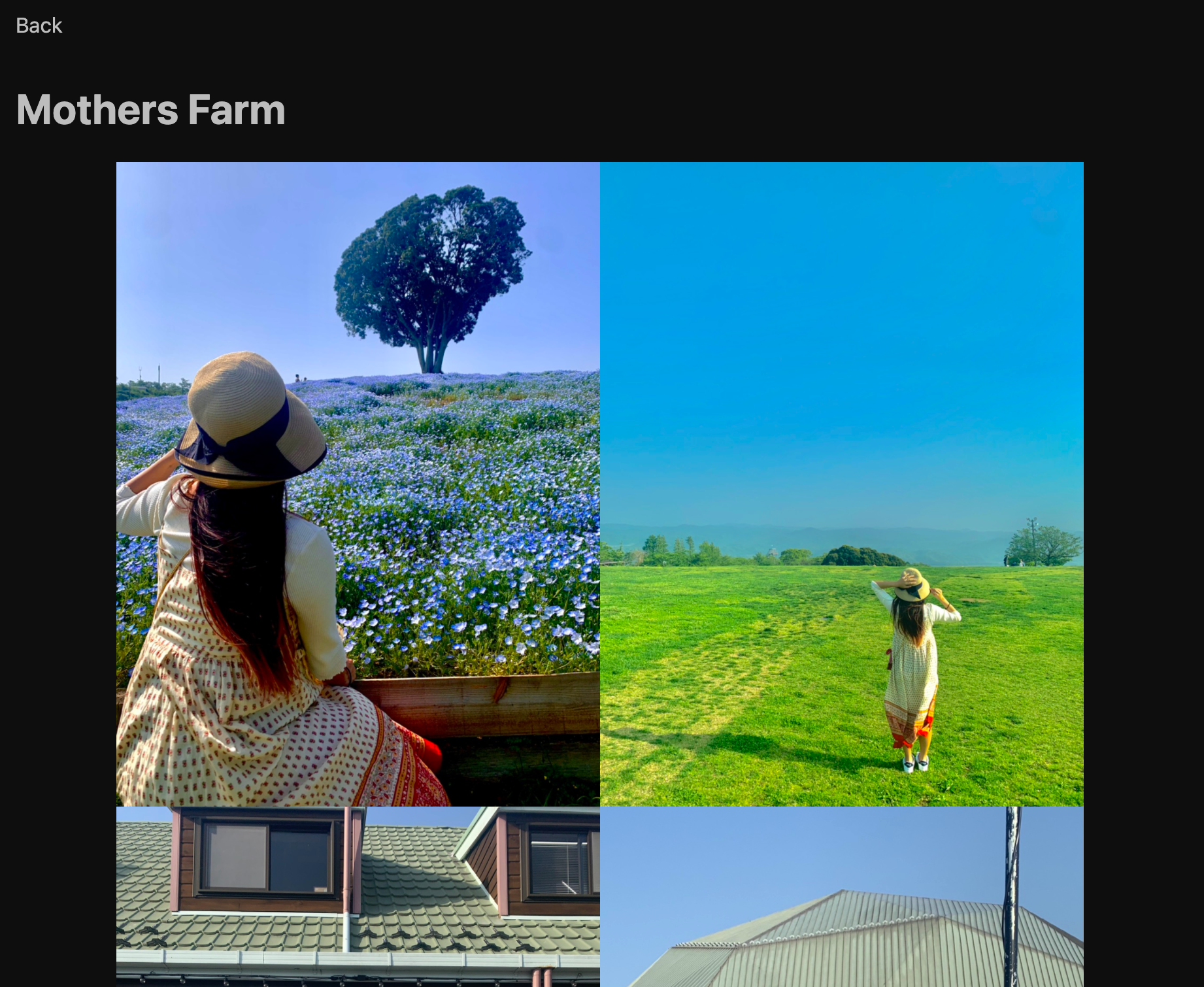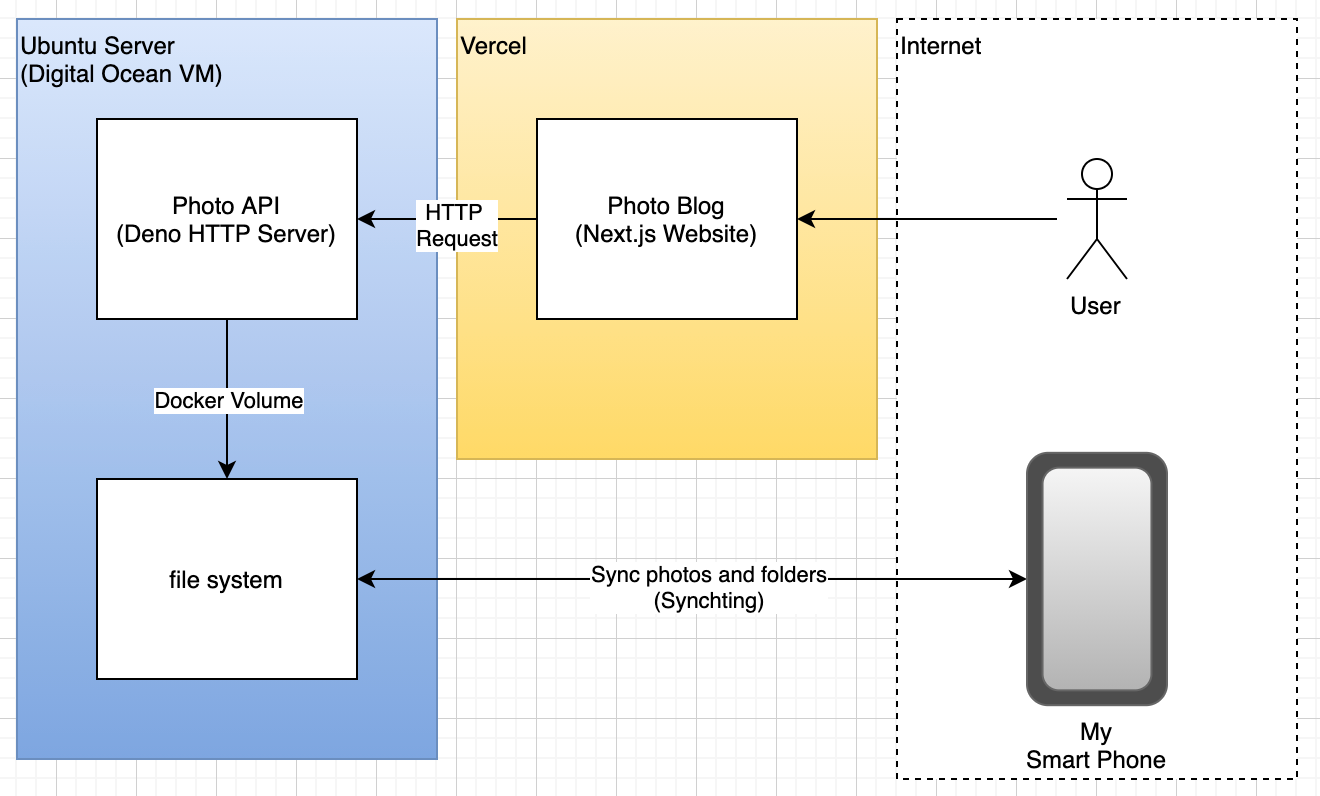Photo Blog with NextJS, Deno and Syncthing
16/05/2021
'How to create an auto-publishing Photo Blog, powered by Next.js, Deno and Syncthing'

Why build a Photo Blog in 2021?
Nowadays Instagram is the standard for photo blogging. I really don't like Instagram for a number of reasons including giving my data to the Facebook algorithm, and the whole idea of sharing with everyone by default. I recently looked into an open source alternative: Pixelfed and tried out running my own server. It's a nice service, but to share my photos with my family and friends the barrier of entry is too high. Another alternative is to run a Ghost blog, which I have tried. However, posting a new entry with pictures is pretty tedious and I found myself not posting as much as I wanted.
What I am trying to achieve is pretty simple: Just a website where each page is an album with pictures of my everyday life that can be viewed by my close family and friends, if they want. And the most important: A very very easy way to publish new photos and albums.
Overview

Technologies used:
From an end users perspective there is nothing interesting. Just a website that connects to an API which serves some images.
From the website admin point of view it gets more interesting. Let's say you want to upload a new album with some images. Just copy the images on your phone to the special folder on your phone, wait a couple of seconds and boom! Your new album has been published! But how does it work?
Syncthing - Sync Photos
Syncthing is a peer-2-peer file syncing service which doesn't require any central server like e.g. Dropbox. For this project I have a folder on my server that is synced with a folder on my smartphone. This can also be synced with another device if you want to edit/add photos from another device.
Deno - Serve Photos
Deno is the new kid on the block that will eventually replace Node.js. With deno
I built a simple HTTP server, running in a Docker container, that reads from a
mounted folder called files. The endpoint /list will return each folder name
that exists in the main folder. The endpoint /album/:albumName will list all
the images in the given album folder folder. And finally the endpoint
/photo/:albumName/:photoName returns the image.
Look at the code
Next.js - Show Photos
Next.js is a JS Framework on top of React and Node.js from Vercel. The website basically have 2 routes. The index route will list the albums. When clicking on an album the page will list all the photos in the album.
Look at the code
Further Automation
To make the deployment easy I am leveraging Vercel to host the frontend and to
auto-deploy on each push to master.
I also setup Docker Hub to listen for pushes to master and auto-publish a new
Docker image. Currently this flow is semi-automated cause I still need to login
to my server and pull the latest image and restart the container.
Conclusion
That's it! If you follow these steps you now have a photo blog you can share with your friends and super easily update with new albumbs and photos.
You can find my photo blog here: https://www2.oskarlindgren.se/photos
Repos